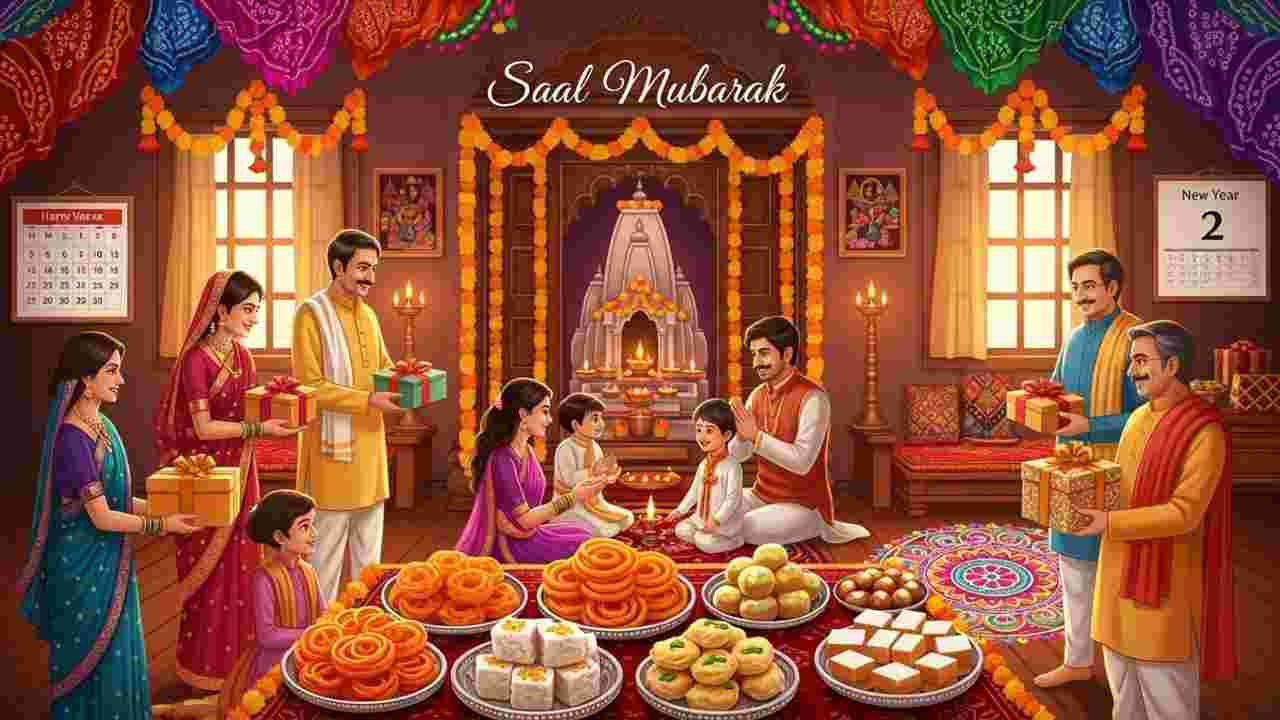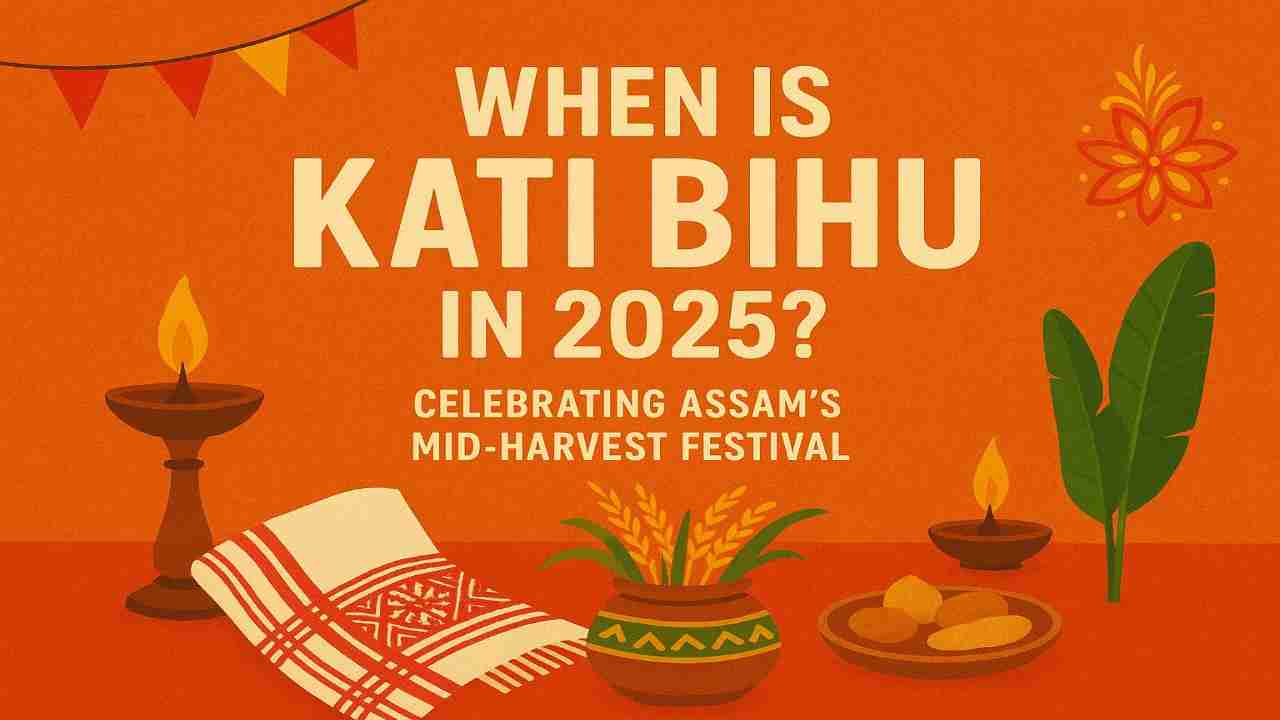
Have you ever noticed how the Gujarati community celebrates the New Year not on January 1st, but a day after Diwali? Known as Gujarati New Year, this festival is deeply rooted in traditions, spirituality, and cultural joy. It is more than just turning a page on the calendar. It is a day of devotion, fresh beginnings, family bonding, and heartfelt celebrations.
In this blog, we’ll explore what makes Gujarati New Year unique, its history, rituals, the date for 2025, and the best ways to share new year wishes in Gujarati with loved ones.
What is Gujarati New Year?
Unlike the global New Year celebrated on January 1st, the Gujarati New Year—also called Bestu Varas—is based on the Hindu Vikram Samvat calendar. It falls on the first day of the Kartik month, immediately after Diwali and Govardhan Puja.
For Gujaratis, this day symbolizes:
- A fresh start in both personal and professional life.
- Religious devotion, with prayers offered to Lord Ganesha and Goddess Lakshmi.
- Family and community bonding, as people visit temples, relatives, and exchange sweets.
- New business beginnings, where ledgers are opened afresh in a ritual called Chopda Pujan.
Thus, the Gujarati New Year is not just a festival but a spiritual, cultural, and social rebirth.
Mythological and Historical Significance
The celebration of Gujarati New Year finds its roots in Hindu mythology and history.
- Association with Lord Krishna – In Dwarka, Lord Krishna is believed to have started the celebration of the new year after Govardhan Puja to honor the shift in seasons and new harvest cycles.
- Vikram Samvat Calendar – The new year marks the beginning of the Kartik month in the Vikram Samvat, a Hindu calendar established by King Vikramaditya in 57 BCE.
- Diwali Connection – Since Diwali marks the victory of light over darkness, the Gujarati New Year naturally represents a fresh dawn—hope, renewal, and prosperity.
This makes Gujarati New Year not only culturally important but also spiritually profound.
Rituals and Traditions of Gujarati New Year
The Gujarati New Year is marked by several age-old rituals, each carrying deep symbolism:
1. Morning Prayers and Temple Visits
People wake up early, take a holy bath, and wear new clothes. Families visit temples, especially Swaminarayan temples in Gujarat, where grand aartis are performed.
On this day, temples offer Annakut (mountain of food) to the deities, symbolizing gratitude for the harvest. Devotees also remember Lord Krishna’s act of lifting the Govardhan hill.
3. Chopda Pujan
Business communities open new accounting books in front of deities, seeking blessings for prosperity in the new financial year. This reflects the belief that wealth and dharma must go hand in hand.
4. Family Gatherings and Feasts
Relatives exchange sweets, gifts, and heartfelt happy new year wishes in Gujarati. Traditional foods like surti undhiyu, jalebi-fafda, and shrikhand are prepared.
5. Firecrackers and Festivity
Even though Diwali fireworks are famous, the Gujarati New Year also witnesses joyous bursts of crackers symbolizing the victory of good fortune.
When is Gujarati New Year in 2025?
This is a commonly asked question every year: when is Gujarati New Year in 2025?
In 2025, Gujarati New Year will be celebrated on Wednesday, October 22, 2025.
It falls just after Diwali, marking Kartik Sud Ekam (the first day of Kartik month in the Vikram Samvat calendar).
So, while the rest of India continues Diwali festivities, Gujaratis step into a brand-new year filled with devotion, joy, and optimism.
Cultural Importance of Gujarati New Year
Beyond rituals, Gujarati New Year represents values and cultural richness:
- Renewal of relationships – Families resolve past conflicts and start anew.
- Prosperity for businesses – Traders believe beginning financial accounts on this day invites wealth.
- Community spirit – Neighbors and friends exchange new year wishes in Gujarati, reinforcing unity.
- Spiritual cleansing – Through prayers and fasting, people wash away negativity and welcome positivity.
It reflects the Gujarati spirit, joyful, resilient, and prosperous.
New Year Wishes in Gujarati
Words hold power, and sending new year wishes in Gujarati makes celebrations even more heartfelt. Here are some examples:
- “નવાં વર્ષની હાર્દિક શુભેચ્છાઓ”
(Heartfelt wishes for the New Year) - “આ નવું વર્ષ તમારા જીવનમાં સુખ, શાંતિ અને સમૃદ્ધિ લાવે.”
(May this new year bring happiness, peace, and prosperity in your life.) - “સૌને ગુજરાતી નવવર્ષાભિનંદન!”
(Wishing everyone a Happy Gujarati New Year!)
Happy New Year Wishes in Gujarati for Loved Ones
When sending happy new year wishes in Gujarati to family, friends, or colleagues, you can make them more personal:
- For Family:
“નવું વર્ષ આપણી કુટુંબ માટે આનંદ, એકતા અને આશીર્વાદોથી ભરેલું રહે.”
(May the new year be filled with joy, unity, and blessings for our family.) - For Friends:
“મારા પ્રિય મિત્ર, નવું વર્ષ તમારા માટે નવા અવસરો અને સફળતા લાવે.”
(My dear friend, may this new year bring new opportunities and success for you.) - For Business Relations:
“આપના ધંધાને નવું વર્ષ શુભતા અને વૃદ્ધિ લાવે.”
(May the new year bring prosperity and growth to your business.)
Sharing such messages strengthens bonds and spreads positivity across all relationships.
Gujarati New Year in Modern Times
While traditions remain central, Gujarati New Year has also adapted to modern lifestyles. Today, celebrations include:
- Social Media Greetings – People share happy new year wishes in Gujarati on WhatsApp and Instagram.
- Community Events – Cultural programs, garba nights, and Diwali fairs add vibrancy.
- Travel & Tourism – Many Gujaratis visit temples, heritage sites, or plan family trips around this time.
Yet, the essence of the celebration, gratitude, renewal, and togetherness that remains timeless.
Lessons from Gujarati New Year
The festival teaches us valuable life lessons:
- Start fresh with positivity.
- Balance spirituality with prosperity.
- Family and community bonds are treasures.
- Gratitude for the past opens doors for the future.
It reminds us that a new year is not just about changing calendars—it is about transforming our mindset.
The Gujarati New Year is more than just a festival; it is a philosophy of new beginnings. With its blend of spirituality, cultural rituals, and joyous celebrations, it inspires us to start afresh with hope and positivity.
So, as Gujarati New Year 2025 approaches on October 22, 2025, prepare to greet your loved ones with heartfelt new year wishes in Gujarati and embrace the values of renewal and prosperity.
May this year bring happiness, success, and peace to all!
Looking for more insights into Indian festivals and their cultural roots? Check out our other festival blogs.
FAQs
1. What is Gujarati New Year called?
Gujarati New Year is popularly known as Bestu Varas. It marks the beginning of the Kartik month in the Vikram Samvat calendar, celebrated a day after Diwali.
2. When is Gujarati New Year in 2025?
In 2025, Gujarati New Year will be celebrated on Wednesday, October 22, 2025. It coincides with Govardhan Puja and Annakut festivities.
3. How is Gujarati New Year different from January 1st New Year?
The January 1st New Year is based on the Gregorian calendar, while Gujarati New Year follows the Vikram Samvat calendar and has spiritual significance linked with Diwali and Hindu traditions.
4. What are the main rituals of Gujarati New Year?
The main rituals include Chopda Pujan (worship of new accounting books), temple visits, Annakut Darshan, family gatherings, and exchanging new year wishes in Gujarati.
5. What are some common Happy New Year wishes in Gujarati?
Some popular greetings are:
- “નવાં વર્ષની હાર્દિક શુભેચ્છાઓ” (Heartfelt wishes for the New Year)
- “સૌને ગુજરાતી નવવર્ષાભિનંદન!” (Wishing everyone a Happy Gujarati New Year!)

